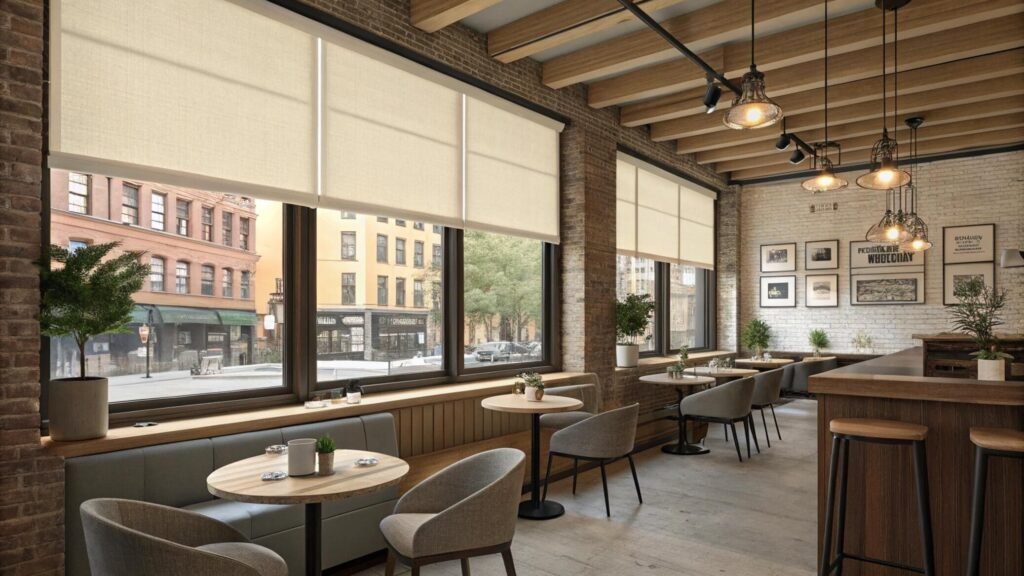Choosing between vertical and horizontal blinds affects your room's functionality and aesthetic appeal for years. After installing thousands of window treatments, I've seen how the wrong choice creates ongoing frustration.
Horizontal blinds excel in smaller windows and provide superior light control, while vertical blinds work better for large windows and sliding doors. Your choice depends on window size, room function, and maintenance preferences rather than arbitrary style preferences.
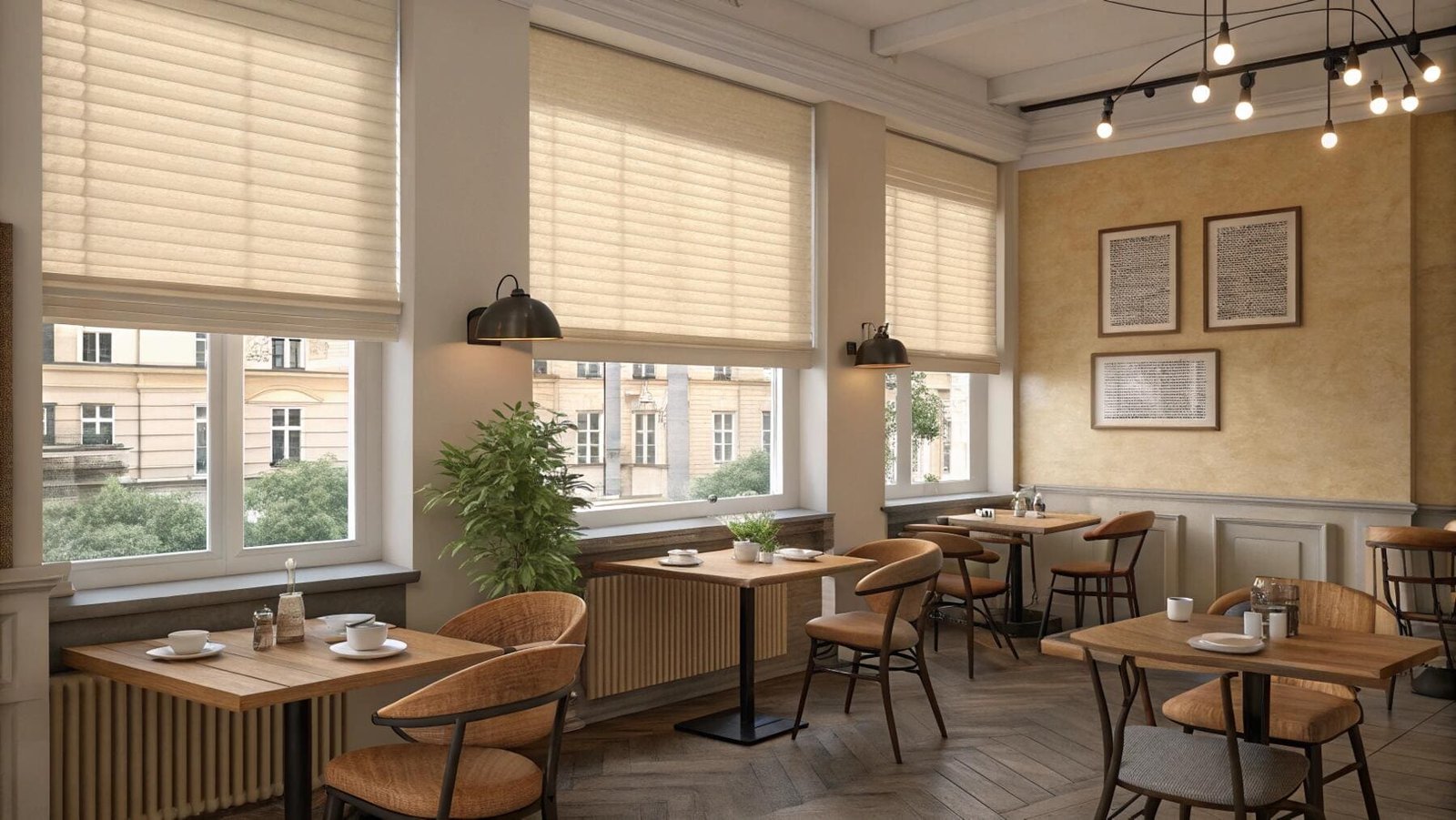
Understanding these fundamental differences prevents costly mistakes and ensures your window treatments enhance rather than hinder your daily life. Let me break down exactly when each type delivers optimal performance and value.
Should I get vertical or horizontal blinds?
Your blind orientation choice should align with window dimensions, room function[^1], and daily operation requirements rather than following arbitrary design trends or personal preferences.
Choose horizontal blinds for windows wider than they are tall, rooms requiring precise light control, and spaces where easy cleaning matters most. Select vertical blinds for tall windows, sliding doors, and areas where stack-back space is limited. Window proportions typically determine the optimal choice.

Window geometry provides the primary decision criterion for blind orientation. Horizontal blinds[^2] complement wide windows by emphasizing breadth and creating visual balance. They work exceptionally well on standard residential windows measuring 36-60 inches wide by 24-48 inches tall, where the horizontal slat pattern reinforces the window's natural proportions.
Vertical blinds[^3] suit tall, narrow windows and sliding glass doors where horizontal systems would appear awkward or create operational difficulties. Floor-to-ceiling windows, French doors, and sliding patio doors benefit from vertical systems that stack neatly to one side when opened, maximizing view and access.
Light control capabilities differ significantly between orientations. Horizontal blinds offer superior directional light management through tilt adjustment that blocks overhead sun while allowing lower-angle light entry. This makes them ideal for offices, bedrooms, and spaces where glare control is critical throughout the day.
Vertical systems provide adequate light control but cannot match horizontal precision due to their swing mechanism limitations. They work better for general room darkening rather than nuanced light direction, making them suitable for living rooms and areas where complete closure matters more than precise adjustment.
Cleaning and maintenance requirements favor horizontal systems in most applications. Individual horizontal slats clean easily with standard blind cleaning tools, while vertical systems require more careful handling due to their full-length panels and bottom chain connections that complicate cleaning processes.
Stack-back considerations affect space utilization and furniture placement. Horizontal blinds stack at the window top, requiring headroom but leaving sides clear for furniture placement. Vertical blinds stack to one side, requiring lateral space but keeping the top area available for valances or architectural details.
Which type of blinds last the longest?
Blind durability[^4] depends more on construction quality and materials than orientation, though mechanical differences between vertical and horizontal systems create distinct wear patterns and failure modes.
Horizontal aluminum blinds typically last 8-12 years in residential applications due to simple tilt mechanisms and individual slat replaceability. Vertical systems average 6-10 years as bottom chains and carrier mechanisms experience more complex wear patterns. Premium materials extend both types significantly.
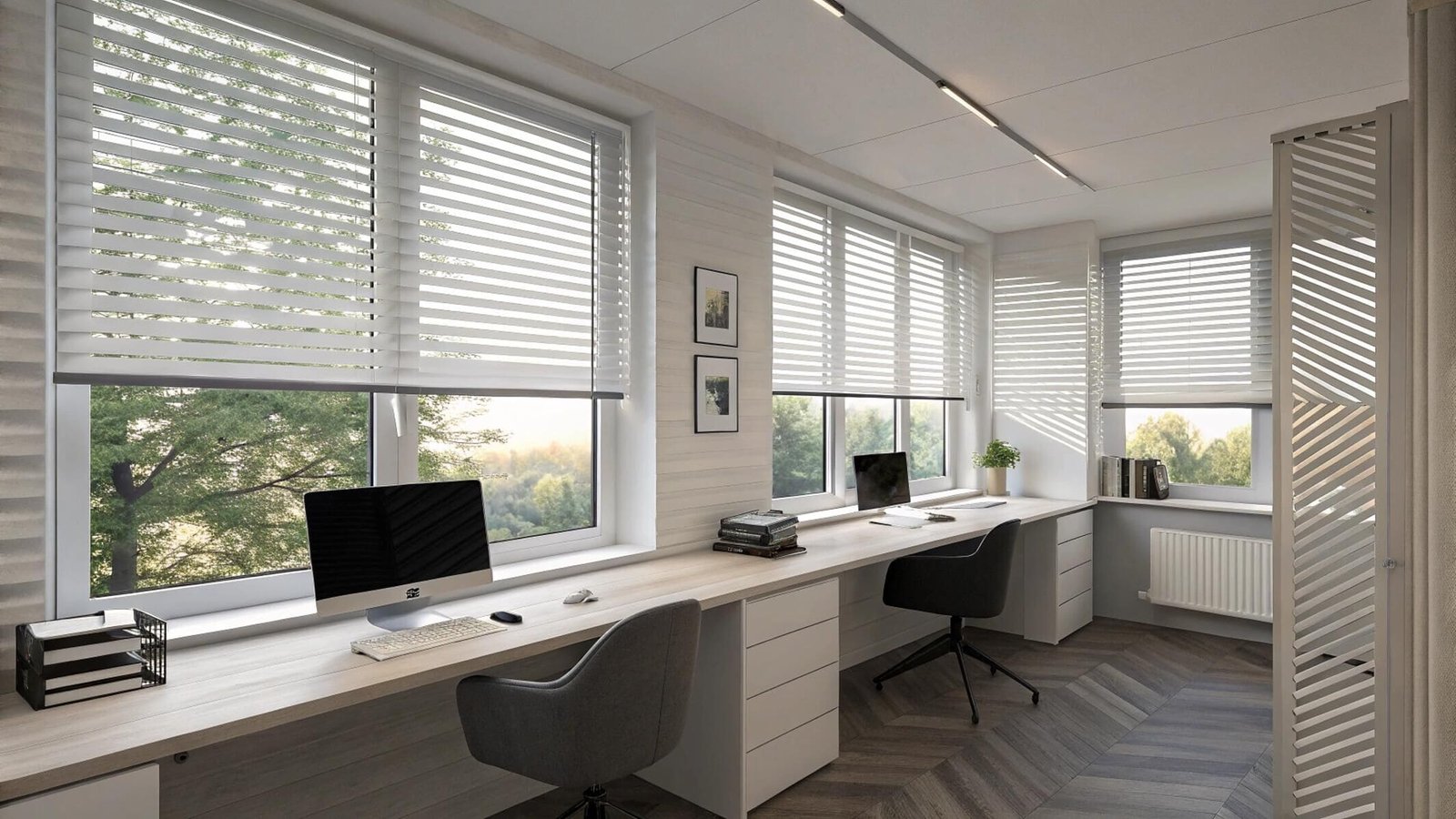
Mechanical complexity differences directly impact longevity expectations between vertical and horizontal systems. Horizontal blinds use simple tilt mechanisms with fewer moving parts, reducing failure probability and maintenance requirements. Individual slat replacement allows extending system life even when some components fail, making horizontal systems more repairable.
Vertical blind mechanisms include more complex components including carriers, bottom chains, and swivel mechanisms that coordinate panel movement. These interconnected systems experience higher stress during operation and require complete system replacement when critical components fail, reducing overall economic life.
Material selection impacts durability more than orientation in many applications. Aluminum horizontal blinds resist warping and maintain operation in high-humidity environments where wood systems fail. However, aluminum vertical panels can develop stress cracks at carrier attachment points that compromise structural integrity.
Fabric vertical blinds face unique aging challenges through UV exposure, dust accumulation, and bottom weight stress that gradually degrades material integrity. Quality fabrics with UV protection last 7-10 years, while budget materials may require replacement within 3-5 years due to fading and material breakdown.
Environmental stress affects each orientation differently. Horizontal systems face direct UV exposure on top slats and dust accumulation in louver channels, while vertical systems experience uneven fading and chain corrosion in humid conditions. Understanding these patterns helps predict maintenance needs and replacement timing.
Usage intensity significantly impacts lifespan for both orientations. Horizontal blinds in high-operation areas like kitchens and offices may wear tilt mechanisms prematurely, while vertical systems in sliding door applications face constant adjustment stress that accelerates carrier wear and bottom chain stretching.
What are people replacing vertical blinds with?
Modern window treatment preferences have shifted toward systems offering better aesthetics, improved functionality, and easier maintenance than traditional vertical blinds provide.
Homeowners most commonly replace vertical blinds with cellular shades for energy efficiency, roller shades for clean aesthetics, or horizontal wood blinds for classic appeal. Commercial spaces often upgrade to motorized roller systems or modern panel tracks that provide similar functionality with contemporary styling.
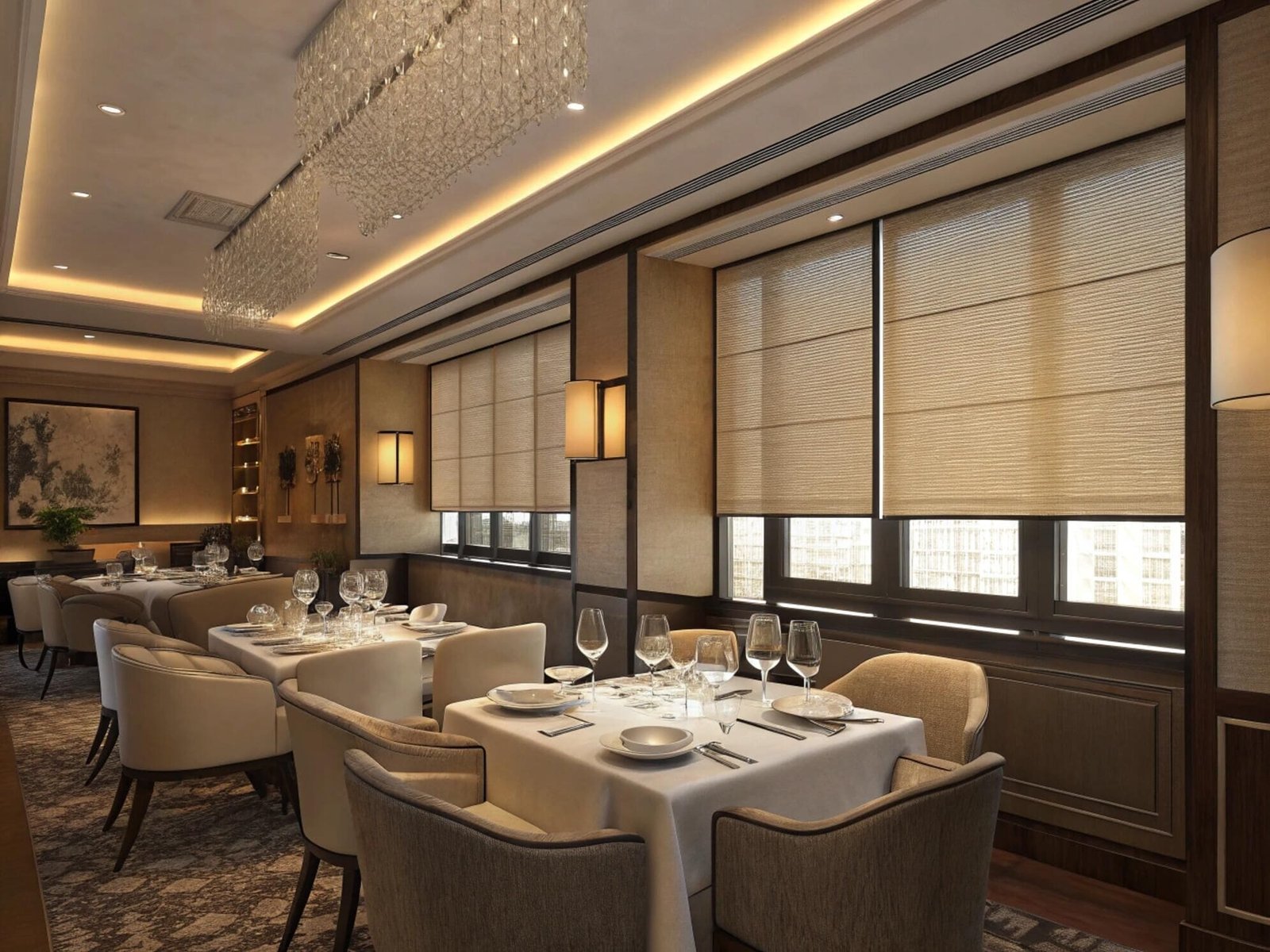
Cellular honeycomb shades represent the most popular energy-focused replacement for vertical blinds. These systems provide superior insulation through trapped air chambers while offering cleaner aesthetics and easier operation than traditional vertical systems. They work particularly well for sliding doors and large windows where energy efficiency is a priority.
Roller shades with premium fabrics offer the minimalist aesthetic many homeowners seek when replacing outdated vertical blinds. Modern roller systems provide smooth operation, diverse fabric options, and motorization capabilities that vertical blinds cannot match. They stack compactly at the window top, creating cleaner sight lines.
Wood and faux wood horizontal blinds appeal to homeowners seeking traditional aesthetics with improved functionality. These systems provide better light control than vertical options while offering the warmth and texture that fabric vertical blinds attempted to provide but with superior durability and maintenance characteristics.
Panel track systems provide modern alternatives for large windows and sliding doors while maintaining the basic functionality of vertical blinds. Contemporary panel tracks use sleeker hardware, better fabrics, and improved operation mechanisms that address traditional vertical blind shortcomings while preserving coverage area benefits.
Motorized systems increasingly replace manual vertical blinds in luxury applications where convenience and integration matter. Smart motorized roller shades or cellular systems provide automated operation, smartphone control, and home automation integration that makes manual vertical adjustment seem primitive by comparison.
Layered window treatment approaches combine different system types to achieve functionality impossible with single vertical blind installations. Pairing cellular shades for insulation with decorative panels for aesthetics, or combining roller shades with motorized drapery, creates comprehensive solutions that exceed vertical blind capabilities.
Do inside or outside mount blinds look better?
Mounting method selection impacts both aesthetic appearance and functional performance, with optimal choice depending on window trim details, wall space, and desired visual effects.
Inside mount blinds create cleaner, more integrated appearances when windows have sufficient depth and attractive trim details. Outside mount blinds provide better light control and energy efficiency while accommodating shallow windows and concealing architectural imperfections. Window depth typically determines the optimal choice.
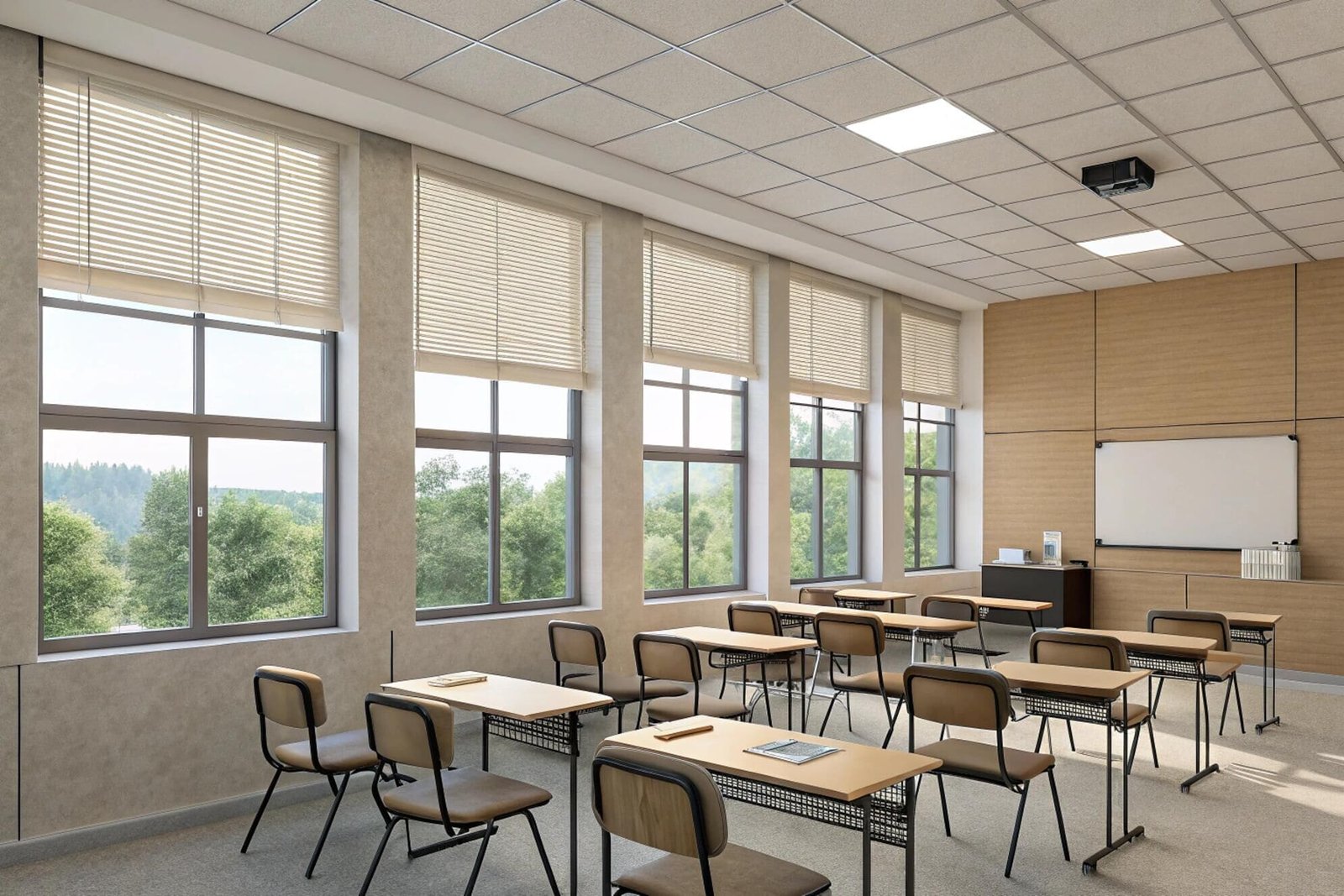
Inside mount installations require adequate window frame depth to accommodate blind hardware without interfering with window operation. Standard inside mounts need 2-3 inches of depth for horizontal systems and up to 4 inches for cellular shades with mounting brackets. Insufficient depth forces outside mounting regardless of aesthetic preferences.
Visual integration favors inside mounting when windows feature attractive trim work and consistent frame dimensions. Inside mounted blinds appear as integral architectural elements rather than added accessories, creating seamless integration that enhances rather than competes with existing design details.
Light control performance generally favors outside mounting through better coverage and gap elimination. Outside mounted blinds extend beyond window frames, blocking light leakage around edges that inside mounted systems cannot address. This becomes particularly important for bedrooms and media rooms where complete light exclusion matters.
Energy efficiency benefits from outside mounting through improved edge sealing and larger coverage areas. Outside mounted cellular shades or insulated panels can significantly improve window thermal performance[^5] compared to inside mounted systems with gap-induced air infiltration.
Window trim quality influences mounting decision significantly. Attractive, well-proportioned trim suggests inside mounting to showcase architectural details, while poor or minimal trim benefits from outside mounting that creates visual weight and importance around windows that lack inherent appeal.
Customization requirements often determine mounting feasibility. Inside mounting requires precise measurements and manufacturing tolerances that increase costs and lead times, while outside mounting accommodates measurement variations and installation adjustments more forgivingly.
What modern alternatives offer better functionality than traditional vertical blinds?
Contemporary window treatment technologies address traditional vertical blind limitations through improved materials, operation mechanisms, and smart integration capabilities that enhance both function and aesthetics.
Modern panel track systems, motorized cellular shades, and smart roller blinds offer superior functionality to traditional vertical blinds through better light control, easier maintenance, energy efficiency, and automation capabilities. These systems eliminate common vertical blind problems while providing enhanced performance benefits.
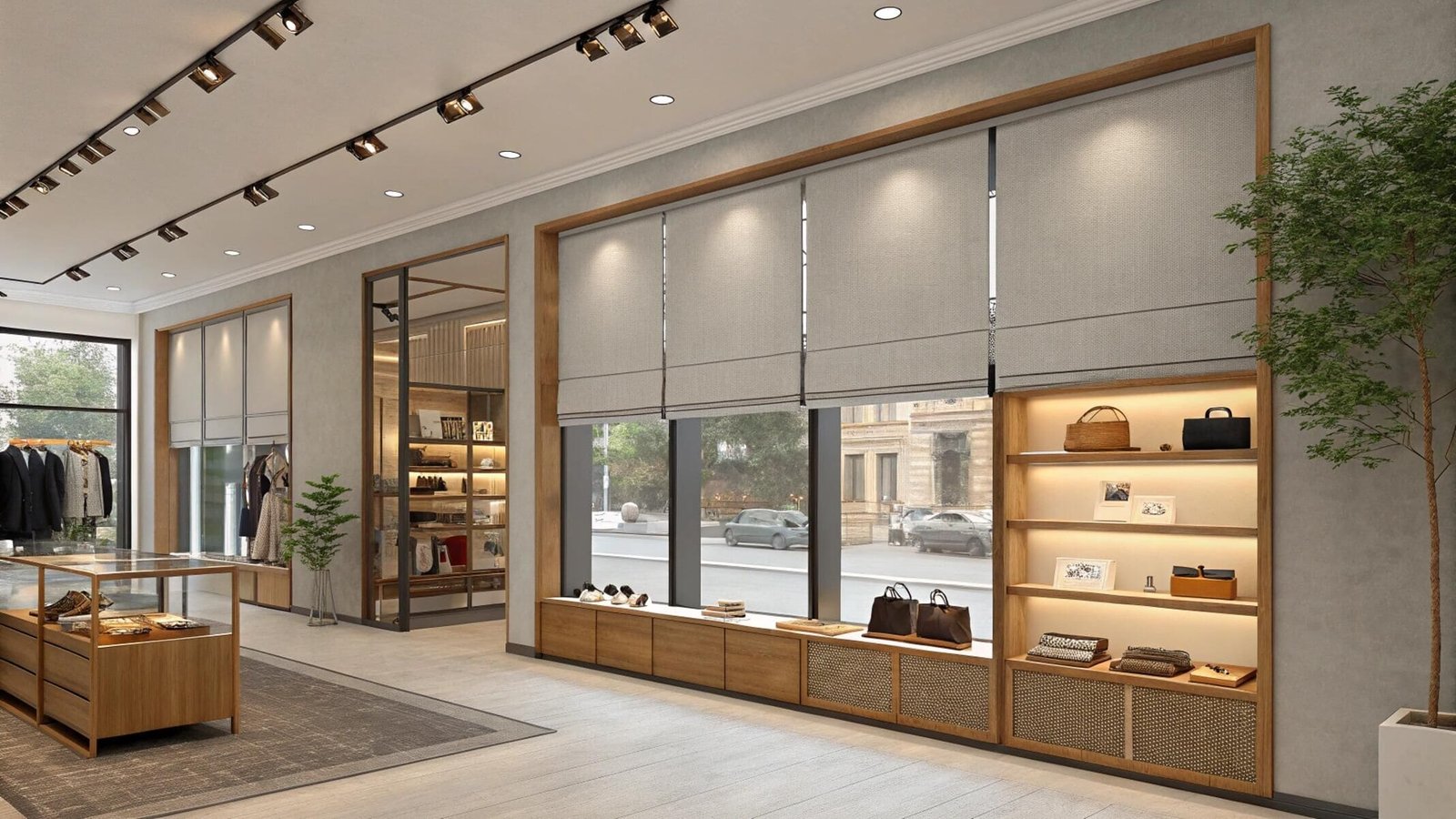
Smart motorized systems provide automated operation that eliminates manual chain pulling and precise positioning difficulties common with vertical blinds. Smartphone apps, voice control, and integration with home automation systems enable scheduling, remote operation, and coordinated control across multiple windows that traditional vertical systems cannot achieve.
Modern panel track systems maintain vertical blind coverage benefits while addressing operational and aesthetic shortcomings. Contemporary tracks use quieter operation mechanisms, more durable fabrics, and sleeker hardware that creates sophisticated appearances without sacrificing functionality for large window coverage.
Cellular shade technology applied to vertical applications provides energy efficiency benefits impossible with traditional vertical blind construction. Vertical cellular systems trap air for insulation while maintaining stack-back advantages, combining thermal performance with space efficiency that standard vertical blinds cannot match.
Advanced fabric technologies in roller and cellular systems offer UV protection[^6], moisture resistance, and soil resistance that surpass traditional vertical blind materials. These performance fabrics maintain appearance longer while providing superior light filtering and privacy options compared to standard vertical blind panels.
Cordless operation systems eliminate safety hazards and operation difficulties associated with vertical blind chains and controls. Modern lifting mechanisms provide smooth, safe operation without cords, chains, or pulls that create entanglement risks and mechanical complexity.
Integration capabilities with lighting and HVAC systems enable coordinated building automation that optimizes energy usage throughout the day. Smart systems automatically adjust based on solar conditions, occupancy, and temperature requirements in ways manual vertical blinds cannot support.
How do cellular shades compare to traditional horizontal blinds for energy efficiency?
Energy performance differences between cellular shades and horizontal blinds stem from fundamental construction approaches, with cellular systems designed specifically for thermal control while horizontal blinds prioritize light management over insulation.
Cellular shades achieve R-values of 2.5-5.0 through air-trapping honeycomb construction, while traditional horizontal blinds provide R-values of only 1.0-1.8. This translates to 40-60% better energy efficiency with cellular systems, resulting in measurable utility bill reductions and improved comfort in extreme climates.
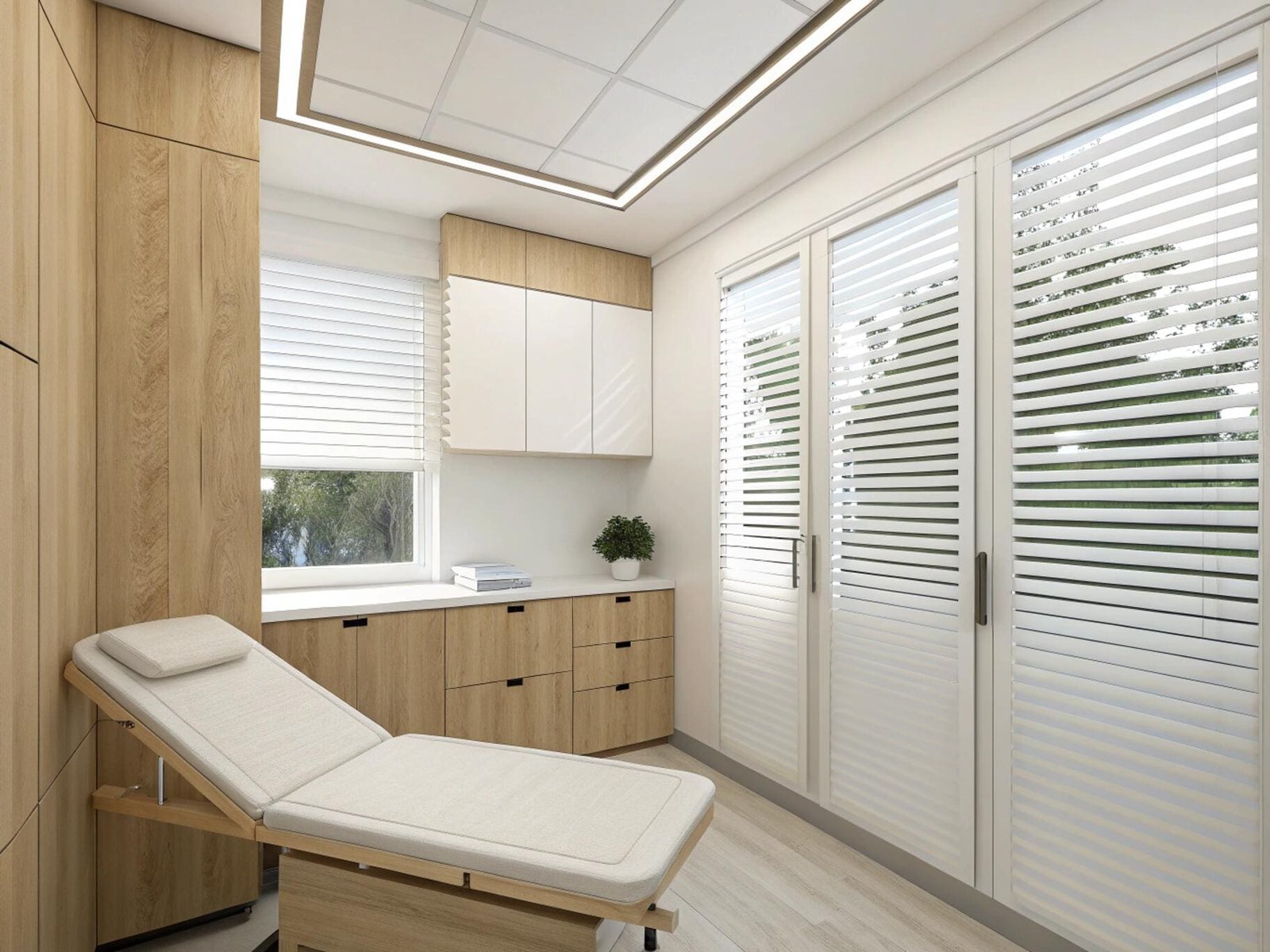
Insulation mechanism differences create substantial performance gaps between these window treatment types. Cellular shades use trapped air within honeycomb cells to resist heat transfer, creating thermal barriers that function similarly to additional window panes. Horizontal blinds rely primarily on reflective surfaces and air gaps that provide limited thermal resistance.
R-value comparisons demonstrate quantifiable energy performance differences. Single-cell honeycomb shades typically achieve R-2.5 to R-3.2, while double-cell systems reach R-3.8 to R-4.8. Premium triple-cell designs can exceed R-5.0, compared to horizontal aluminum blinds that rarely exceed R-1.8 even with reflective coatings.
Solar heat gain control capabilities favor cellular systems in cooling-dominated climates where blocking radiant heat provides primary energy benefits. Cellular fabrics with reflective backing can achieve Solar Heat Gain Coefficients below 0.25, while horizontal blinds typically range from 0.35-0.65 depending on slat angle and reflectivity.
Air infiltration differences significantly impact real-world energy performance beyond laboratory R-value measurements. Properly fitted cellular shades with side tracks can virtually eliminate air movement through windows, while horizontal blinds inherently allow air circulation between slats that reduces effective thermal resistance by 15-25%.
Installation and fit quality affect energy performance more dramatically with horizontal systems than cellular alternatives. Horizontal blind energy benefits depend heavily on proper slat closure and minimal gaps, while cellular systems provide consistent thermal resistance regardless of minor installation variations or operational positions.
Cost-effectiveness analysis shows cellular systems providing better long-term value in energy-conscious applications despite higher initial costs. Annual energy savings of $100-300 per window in extreme climates can justify cellular premium costs within 3-5 years, while horizontal blinds offer minimal energy-related payback potential.
Which window treatments provide better light control than standard vertical blinds?
Light control precision and flexibility have improved dramatically with modern window treatment technologies that offer superior adjustment capabilities compared to traditional vertical blind swing mechanisms.
Horizontal blinds with micro-adjustment capabilities, layered cellular and roller combinations, and automated tracking systems provide significantly better light control than vertical blinds. These systems offer precise directional control, gradual adjustment ranges, and automated optimization that vertical swing mechanisms cannot match.
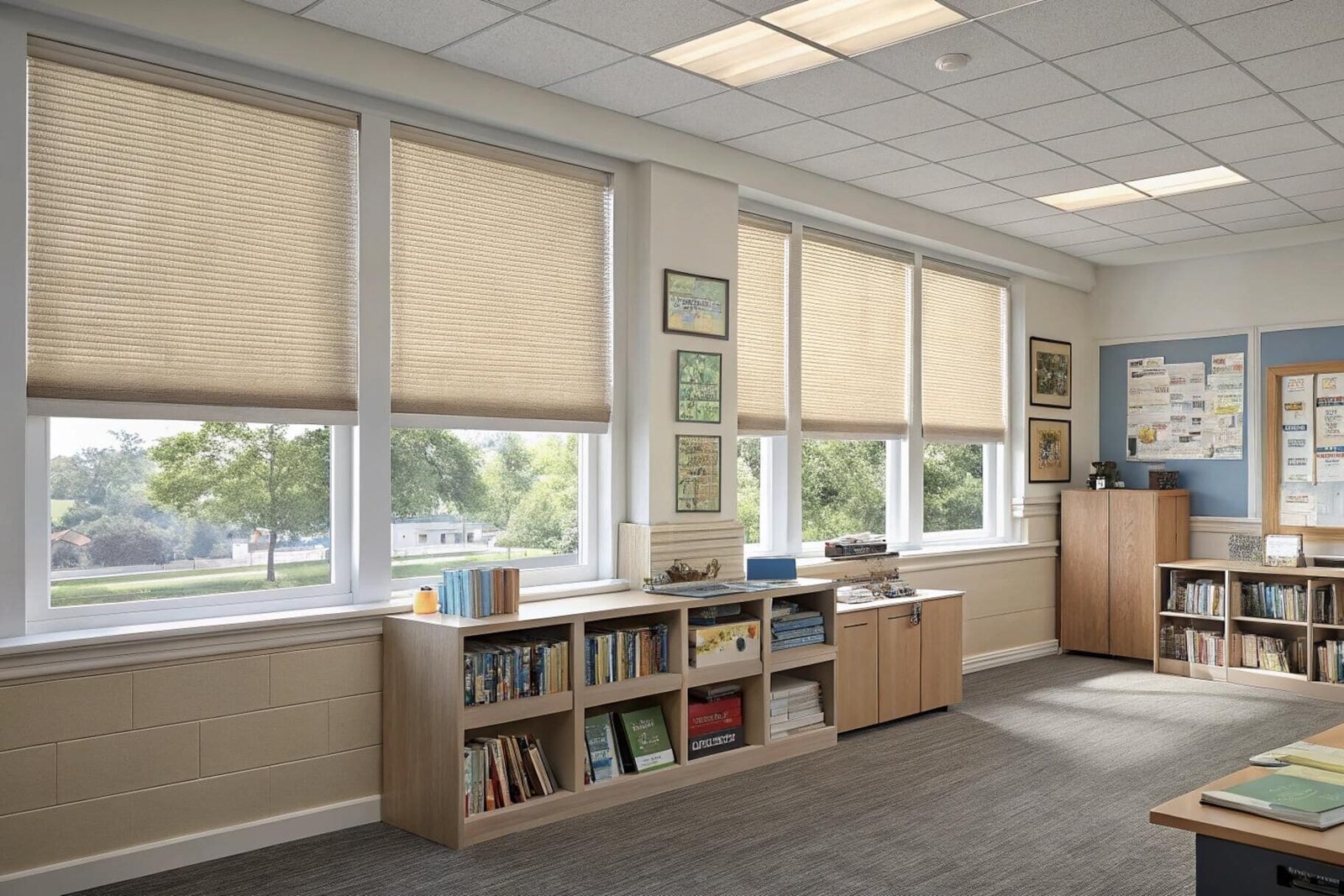
Directional light control represents the primary advantage of horizontal systems over vertical alternatives. Horizontal slats can be precisely angled to block overhead sun while admitting lower-angle natural light, creating comfortable interior lighting throughout the day. Vertical blinds can only swing open or closed without directional adjustment capabilities.
Gradual adjustment precision allows horizontal systems to fine-tune light levels through small tilt increments that create optimal lighting conditions for different activities and times of day. Vertical blinds offer limited adjustment between fully open, partially open, and closed positions without intermediate control options.
Layered system approaches combine multiple window treatments to achieve light control impossible with single systems. Pairing light-filtering cellular shades with blackout roller systems enables independent adjustment of natural light admission and complete room darkening as needed throughout the day.
Automated light tracking systems adjust window treatments continuously based on sun position, interior light levels, and occupancy patterns. Smart sensors and motorized adjustment create optimal lighting conditions without manual intervention, while traditional vertical blinds require constant manual repositioning to maintain comfort.
Top-down, bottom-up cellular systems provide privacy while maintaining natural light admission through independent adjustment of upper and lower portions. This functionality proves particularly valuable in ground-floor applications where privacy matters but natural light remains desirable.
Specialty fabrics in modern roller and cellular systems offer light filtering options from sheer to blackout within single installations. Dual-shade systems with different opacity levels provide comprehensive light control range that exceeds vertical blind capabilities while maintaining clean aesthetics.
What are the maintenance advantages of modern blinds over traditional vertical systems?
Maintenance requirements and cleaning accessibility have improved significantly with contemporary blind designs that address traditional vertical system shortcomings through better materials and simplified mechanisms.
Modern horizontal blinds, cellular shades, and roller systems require 50-70% less maintenance time than vertical blinds through easier cleaning access, fewer mechanical components, and superior materials that resist soiling and damage. Simplified operation mechanisms reduce service calls and extend operational life significantly.
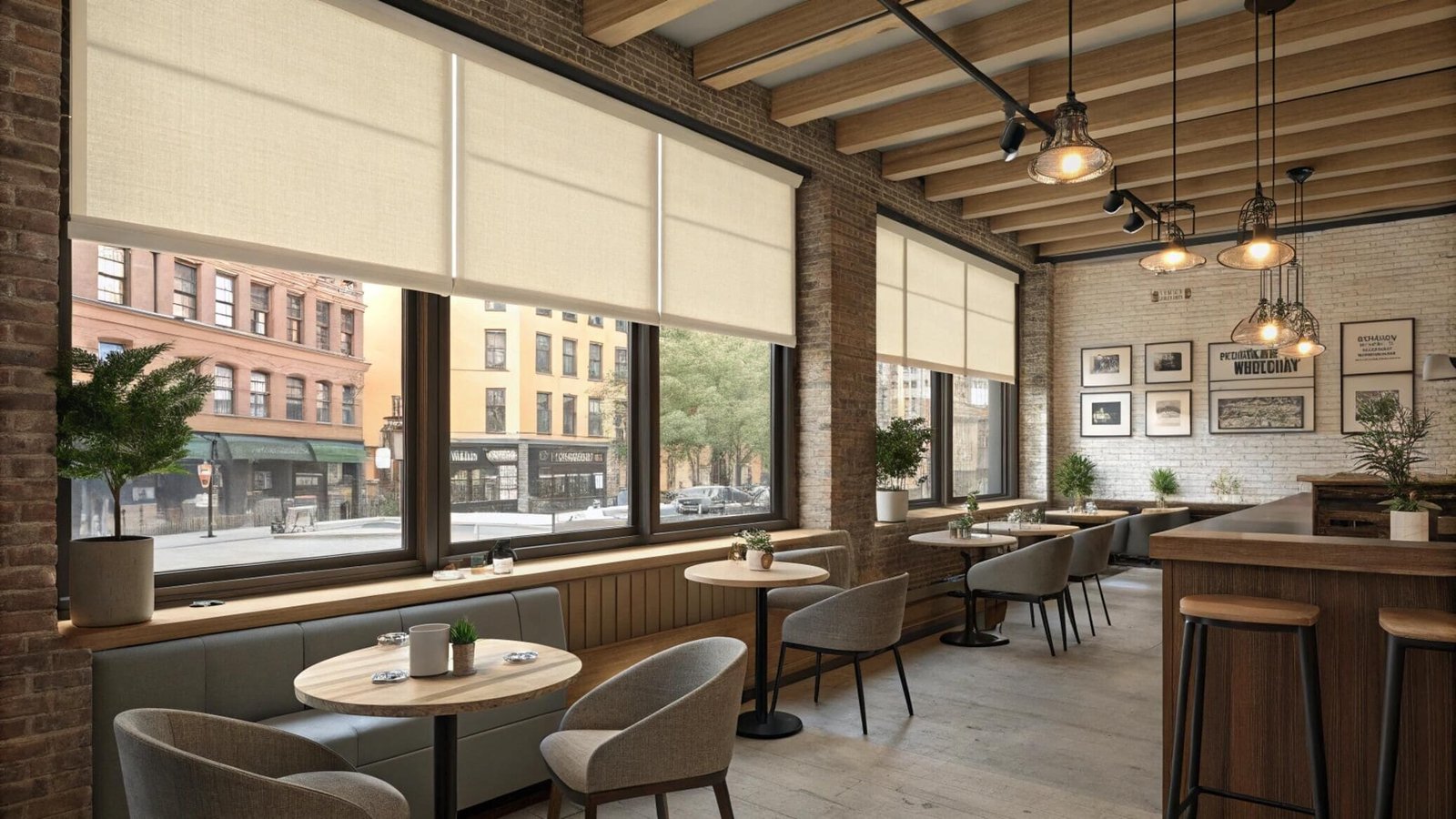
Cleaning accessibility improvements eliminate the awkward panel handling and chain management required for vertical blind maintenance. Horizontal slats clean easily with standard tools, while modern roller and cellular systems require only surface cleaning without component disassembly or special handling procedures.
Dust accumulation patterns favor horizontal and cellular systems over vertical alternatives. Vertical blinds collect dust on both panel faces and in bottom chain mechanisms, while horizontal systems concentrate dust on top surfaces that are easily accessed. Cellular systems resist dust penetration through enclosed cell construction.
Mechanical simplification reduces maintenance requirements through fewer moving parts and elimination of complex chain and carrier systems. Modern cordless horizontal blinds and cellular systems use spring-loaded or motorized mechanisms that require minimal adjustment and virtually no lubrication or component replacement during normal service life.
Material quality improvements in contemporary systems resist fading, warping, and moisture damage that plague traditional vertical blinds. UV-resistant fabrics, powder-coated aluminum, and composite materials maintain appearance and function significantly longer than standard vertical blind materials, reducing replacement frequency and associated costs.
Service accessibility advantages favor modern horizontal and cellular systems through standardized parts availability and simplified repair procedures. When maintenance becomes necessary, common components and straightforward replacement processes minimize downtime and service costs compared to vertical systems requiring specialized parts and complex adjustment procedures.
Professional cleaning services report 40-60% time savings when maintaining horizontal and cellular systems compared to vertical alternatives. This efficiency translates directly into lower maintenance costs for commercial applications and reduced time investment for residential self-maintenance, making modern systems more economical throughout their service life.
Conclusion
Choose horizontal blinds for superior light control and easy maintenance, vertical blinds for large windows and doors, or modern alternatives for optimal functionality and energy efficiency.
Find the Perfect Window Treatment Solution for Your Project
Stop guessing about blind selection and performance. Our technical team provides detailed product comparisons, energy calculations, and specification support for your specific window requirements and room functions.
Get comprehensive product recommendations, performance data, and custom pricing for horizontal, vertical, and modern alternative systems within 24 hours. We deliver the expertise needed to make confident decisions that satisfy both aesthetics and functionality requirements.
Contact our window treatment specialists directly at info@velablinds.com for immediate project consultation and product selection guidance.
Extended FAQ Section
How do I choose between vertical and horizontal blinds for large windows?
Large window blind selection depends primarily on window proportions, room function, and desired aesthetic rather than arbitrary size thresholds, with specific considerations for windows exceeding 6 feet in any dimension. Horizontal blinds work best for wide windows where width exceeds height by 20% or more, while vertical systems suit tall windows where height exceeds width significantly. For square large windows, consider room function priorities - horizontal systems provide superior light control for offices and bedrooms, while vertical systems offer better space efficiency for living areas with furniture placement constraints. Large horizontal installations may require center support brackets for windows exceeding 8 feet wide, while vertical systems can span wider openings without intermediate support. Motorization becomes particularly valuable for large systems where manual operation becomes cumbersome, with costs justified through improved convenience and extended mechanism life. Energy efficiency considerations favor cellular systems for large windows where thermal performance impacts become significant, potentially offsetting higher initial costs through utility savings. Consider maintenance accessibility for large installations, as horizontal systems generally provide easier cleaning access than vertical alternatives requiring ladder work or professional service.
What are the cost differences between vertical and horizontal blind installations?
Installation costs vary significantly between vertical and horizontal systems based on complexity, customization requirements, and mounting challenges, with horizontal systems typically costing 15-25% less for standard installations. Basic horizontal aluminum blinds range $75-200 per window installed, while vertical systems cost $100-250 due to more complex hardware and adjustment requirements. Custom installations increase costs proportionally, with horizontal systems adding $50-100 for special sizing compared to $75-150 for vertical custom work. Motorization premiums apply equally to both orientations, adding $200-400 per window regardless of blind type. Labor costs favor horizontal installations due to simpler mounting procedures and fewer adjustment requirements, with typical installation times of 30-45 minutes versus 45-75 minutes for vertical systems. Specialty hardware for inside mounting or unusual window shapes affects both types similarly, though vertical systems may require additional structural support for very wide installations. Long-term cost considerations favor horizontal systems through lower maintenance requirements and parts availability, while vertical systems may require complete replacement when key components fail. Energy-efficient upgrades like cellular alternatives provide better cost-benefit ratios than premium vertical or horizontal options in most applications, justifying higher initial investment through operational savings.
How do modern smart blinds compare to traditional manual systems?
Smart blind technology transforms window treatment functionality through automated operation, environmental response, and integration capabilities that traditional manual systems cannot provide, with ROI justified through convenience and energy savings in most applications. Motorized systems eliminate daily operation effort while providing scheduling capabilities that optimize energy efficiency throughout the day based on sun position and occupancy patterns. Smart integration with home automation platforms enables voice control, smartphone operation, and coordination with lighting and HVAC systems that improve comfort while reducing energy consumption 15-25% compared to manual operation. Battery-powered smart systems offer retrofit capability without electrical work, providing 6-12 months operation per charge with solar charging options extending service intervals. Initial costs run 3-5 times manual system pricing, but commercial applications often achieve payback within 2-3 years through reduced HVAC loads and improved space utilization. Reliability concerns about electronic components prove largely unfounded with quality systems, as modern motors and controls achieve 8-12 year service life comparable to premium manual mechanisms. Smart diagnostics provide maintenance alerts and troubleshooting guidance that reduce service calls and extend system life through preventive care. Professional installation becomes more critical for smart systems due to programming and integration requirements, but ongoing operation simplicity more than compensates for initial setup complexity.
---
[^1]: Find out how the purpose of a room can guide your choice of window treatments.
[^2]: Explore the advantages of horizontal blinds for light control and aesthetics in various room settings.
[^3]: Learn about vertical blinds and how they can enhance large windows and sliding doors.
[^4]: Investigate the lifespan and durability of various blind types to ensure a long-lasting investment.
[^5]: Investigate which blinds offer superior insulation and energy efficiency for your home.
[^6]: Learn about window treatments that provide UV protection to preserve your interiors.Partner with VelaBlinds for Your Next Project
Smart window treatments shouldn't be complicated. After working with 500+ distributors and contractors worldwide, I've streamlined the process to get you quality products, competitive pricing, and reliable support - every time.
Why project professionals choose VelaBlinds:
- ✅ Fast, Accurate Quotes - Detailed specs and pricing within 24 hours
- ✅ Transparent Pricing - No hidden fees, volume discounts clearly outlined
- ✅ Quality Assurance - Direct partnerships with certified OEM manufacturers
- ✅ Project Support - Dedicated account manager from quote to delivery
Start your next project:
📧 Quick Quote: Send your requirements to info@velablinds.com
📱 Direct Contact: WhatsApp +86 137 2012 8317
🌐 Browse Solutions: https://velablinds.com/
📁 Product Resources: Access spec sheets, catalogs & project files
Jimmy Chen, Founder
"I built VelaBlinds to solve the real challenges I faced as a project buyer - long lead times, unclear specs, and unreliable suppliers. Let's discuss how we can power your projects with smarter blinds."
Serving distributors and contractors across North America, Europe, and Australia since 2018.

